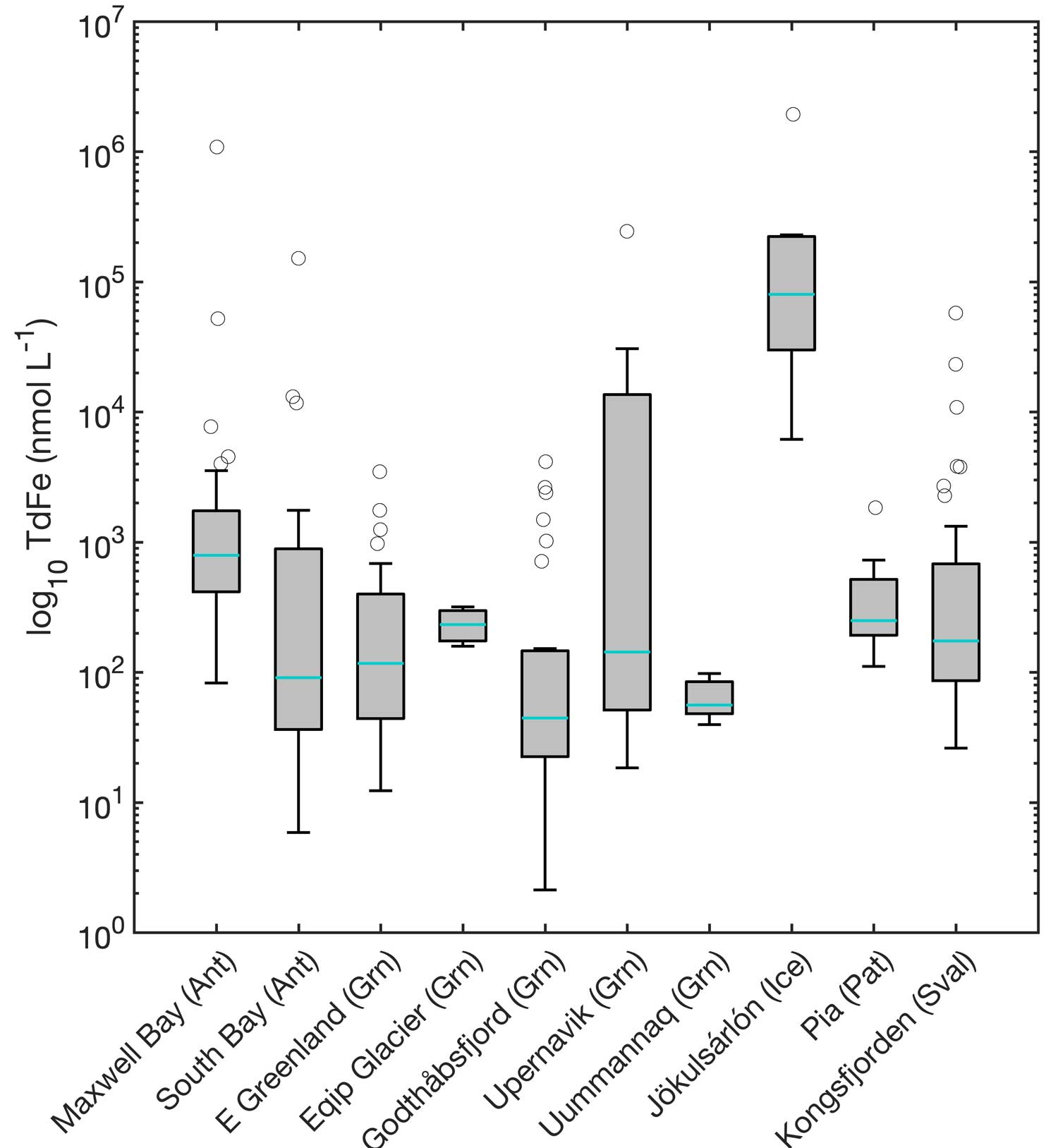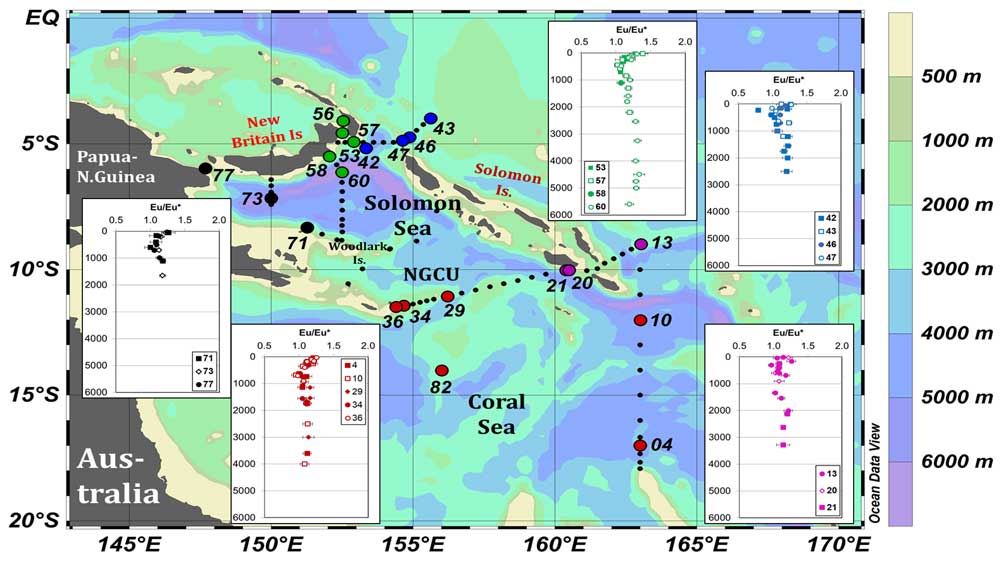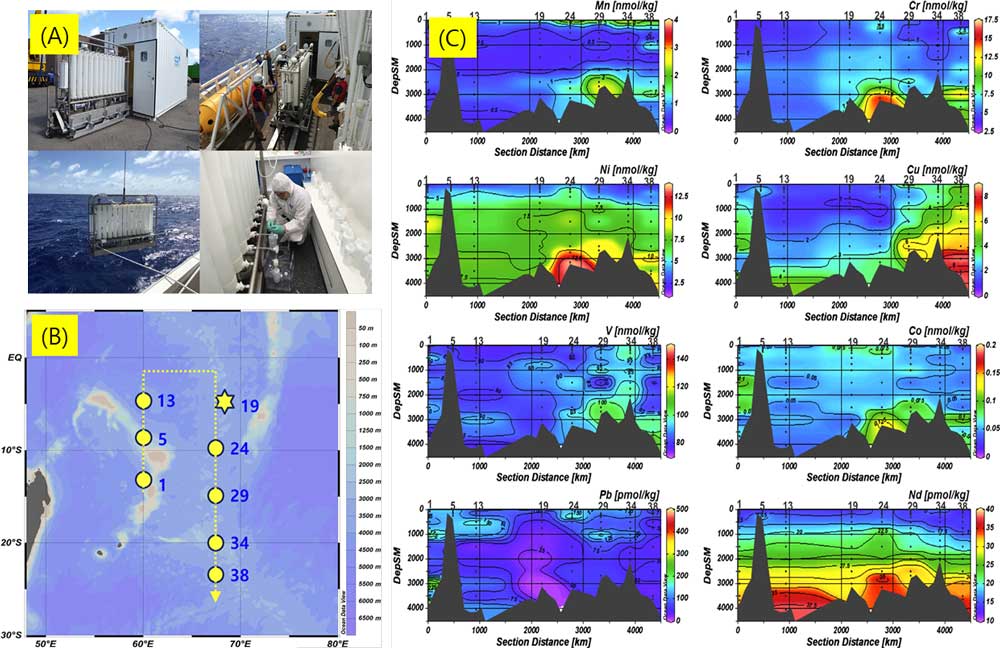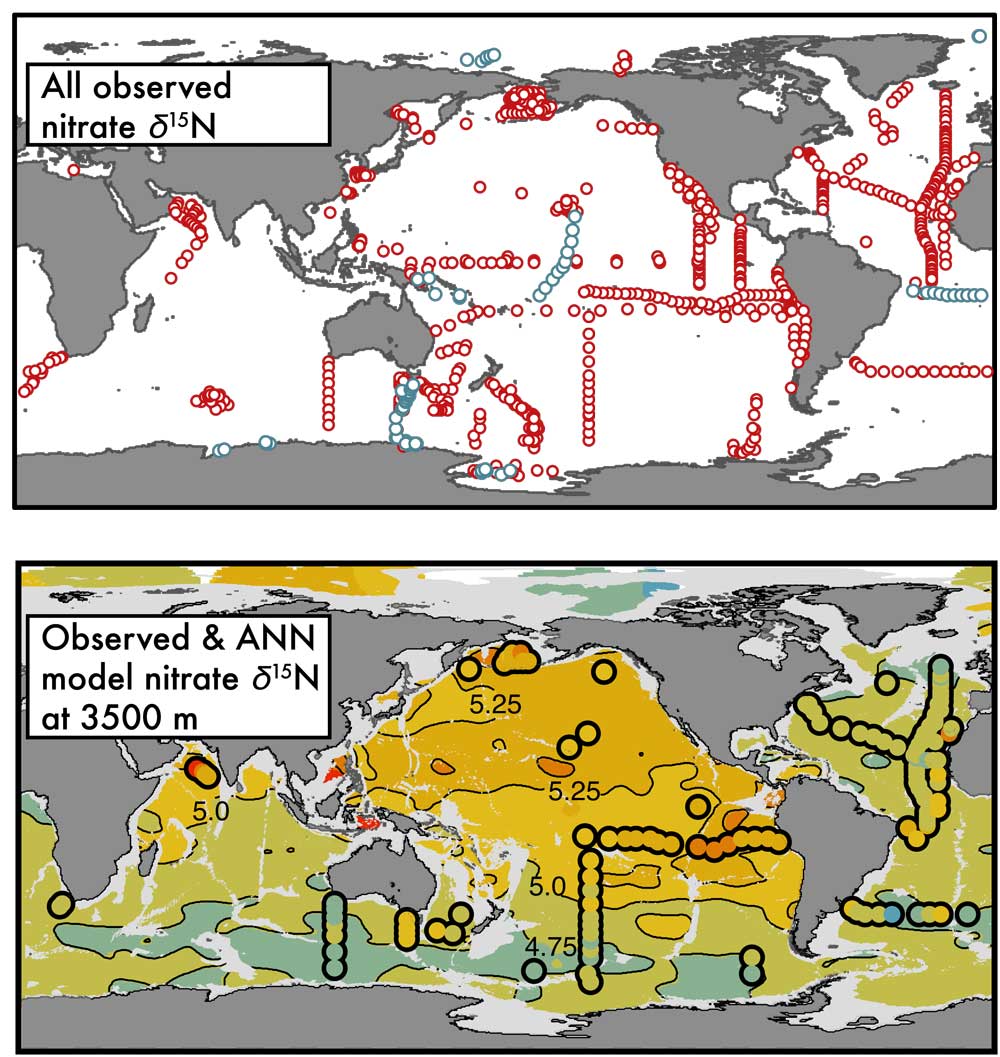Unprecedented iron delivery from the Congo River margin to the South Atlantic Gyre
Radium isotopes are used to demonstrate that make the Congo the most significant riverine source of iron to the South Atlantic.
Some recent GEOTRACES science findings are reported below.

Radium isotopes are used to demonstrate that make the Congo the most significant riverine source of iron to the South Atlantic.

Joint Science Highlight with US-Ocean Carbon & Biogeochemistry (US-OCB). Much of the primary production in low-iron marine environments is carried out by diatoms, and therefore the details of how these […]

Icebergs have been speculated to constitute one of the largest fluxes of iron (Fe) into the polar oceans since the 1930s and thus recent increases in ice discharge around the […]

In the frame of GEOTRACES cruise GA08, Rahlf et al. (2020, see reference below) determined seawater profiles of dissolved radiogenic neodymium isotope signatures (εNd) and neodymium concentrations across the restricted western […]

The Solomon Sea is surrounded by high and intensively weathered islands. Its complex topography and hydrography make this area a potential source of trace elements to the waters flowing through […]

As part of the GEOTRACES process study HEOBI (GIpr05) van der Merwe and co-workers (2019, see reference below) conducted a thorough characterization of the labile and refractory iron phases of the […]

Thanks to the newly launched research vessel (R/V) Isabu of the Korea Institute of Ocean Science and Technology (KIOST), and the acquisition of a contamination-free PRISTINE (NIOZ, NL) ultraclean seawater sampling system […]

The importance of the cycle and speciation of nitrate and its isotopes (δ15N) in the ocean does not have to be demonstrated anymore. In an attempt to overcome the difficulty […]

Conway and co-authors (2019, see reference below) present the first evidence that anthropogenic iron (Fe) from combustion sources is visible at the basin scale, using iron isotopic composition (δ56Fe) analysis […]